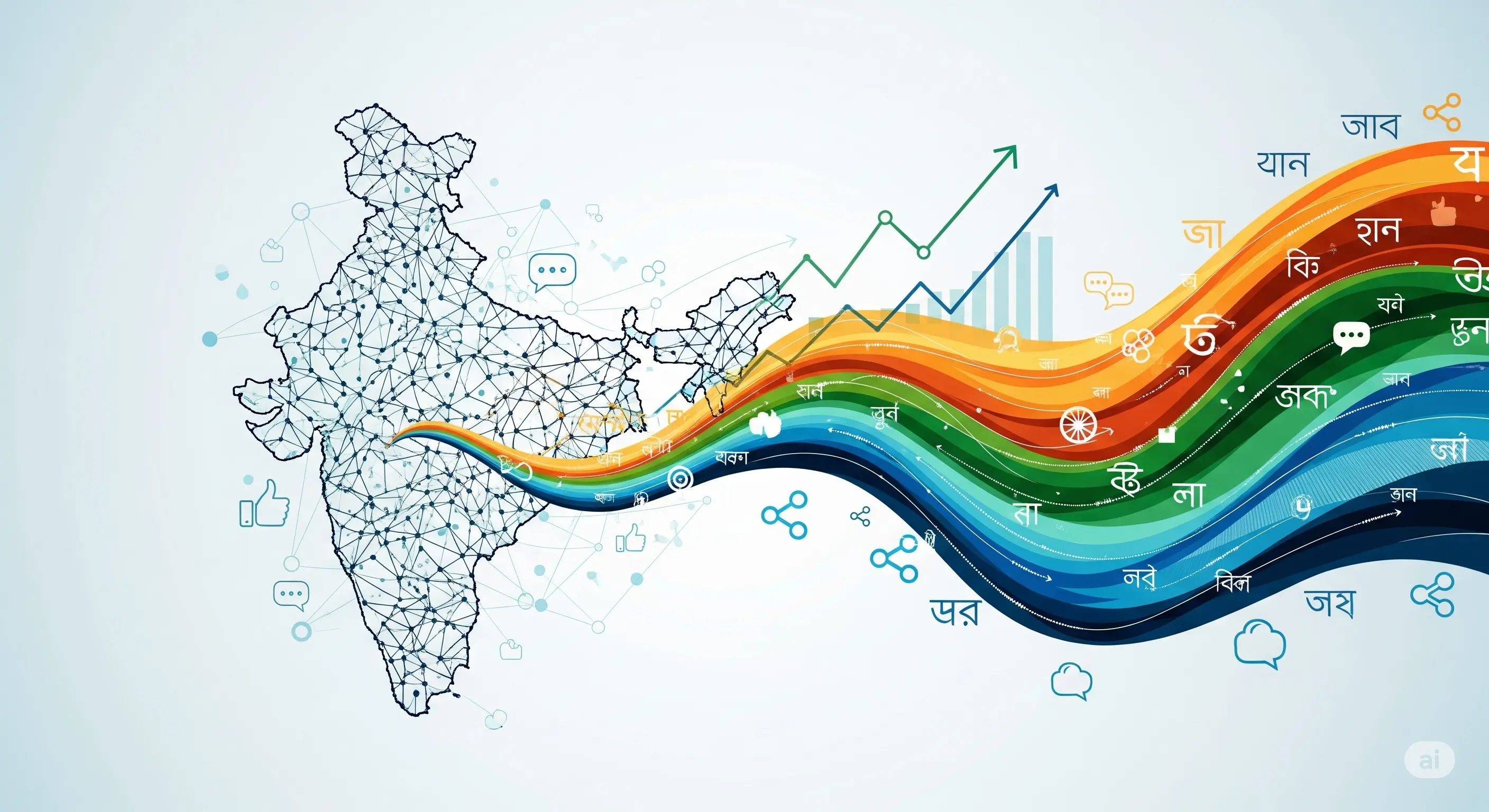India's digital revolution is no longer confined to English-speaking urban centers. The true growth story is unfolding in "Bharat" – the vast expanse of semi-urban and rural India, where internet adoption is soaring, and users prefer to consume content in their native languages. This demographic shift has made vernacular content in India not just a trend, but a strategic imperative for any business aiming for widespread reach and deep engagement. At Vermosys, we help you bridge this linguistic gap and connect with your audience authentically.
1. The Linguistic Landscape of Indian Internet Users
While English remains important, over 90% of new internet users in India are non-English speakers. They primarily use the internet for entertainment, communication, and information in languages like Hindi, Bengali, Marathi, Tamil, Telugu, Kannada, Gujarati, and Malayalam. These users are more comfortable searching, interacting, and making purchase decisions in their mother tongue. Businesses that ignore this linguistic diversity are missing out on a massive, engaged audience segment.
2. Why Vernacular Content is a Game-Changer
Embracing vernacular content offers several compelling advantages:
- Wider Reach: Access a larger, untapped market segment that prefers regional languages.
- Deeper Engagement: Content in native languages resonates more deeply, fostering trust and loyalty.
- Reduced Competition: While English content is saturated, regional language markets often have less competition, offering better opportunities for ranking.
- Improved SEO: Search engines are increasingly sophisticated in understanding local nuances and ranking relevant vernacular content. This aligns with SEO trends in India, particularly hyper-local and voice search.
- Higher Conversions: Users are more likely to convert when presented with information in a language they fully comprehend and feel comfortable with.
3. Strategies for Effective Vernacular Content
It's not just about direct translation; it's about cultural relevance and strategic implementation:
- Localized Keyword Research: Understand how users search in specific regional languages. Direct translation of English keywords often doesn't work.
- Transcreation, Not Just Translation: Adapt your message, tone, and examples to resonate with local cultural contexts. A literal translation can sometimes lose meaning or even offend.
- Multilingual Website Structure: Implement proper `hreflang` tags to signal language and regional targeting to search engines. Consider subdomains or subdirectories for different language versions.
- Content Formats: Beyond text, explore video content, audio podcasts, and interactive elements in regional languages, as visual and auditory content consumption is high in India.
- Local SEO Integration: Combine vernacular content efforts with strong local SEO strategies, including optimizing Google My Business profiles in regional languages.
- Community Engagement: Engage with local online communities, forums, and social media groups where regional languages are dominant.
4. The Future is Multilingual
As internet penetration deepens in India, the demand for content in regional languages will only grow. Search engines are continuously improving their ability to understand and serve content in various Indian languages, making it easier for users to find what they're looking for, regardless of their preferred language. For businesses, investing in a robust vernacular content strategy now means building a sustainable competitive advantage and securing a loyal customer base for the future. It's about meeting your audience where they are, in the language they speak and understand best.
Don't let language barriers limit your business potential in India. Embrace vernacular content and unlock the immense opportunities presented by India's diverse digital landscape.

